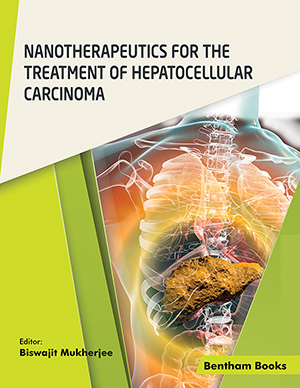Abstract
Globally, hepatocellular carcinoma (HCC) is one of the most devastating
neoplasia and has a remarkably high mortality rate. Furthermore, the long latent period
associated with HCC lends the diagnosis at the intermediate or advanced stages where
the chemotherapy is the solitary therapeutic intervention. The responsiveness of HCC
towards conventional chemotherapeutic agents is notably poor due to multiple factors.
Among them, multiple drug resistance, reduced drug concentration at the tumor site,
quicker clearance, and non-specific distribution are the prime causes leading to
remarkably high off-target toxicity and mortality. More importantly, the approval of
several multikinase inhibitors (MKIs) by the United States Food and Drug
Administration (FDA) for the treatment of HCC as targeted therapeutics has been
found to be inadequate to make a notable impact on survival. Therefore, ligand-based
targeted therapeutics capable of delivering the therapeutic modality specifically into
neoplastic hepatocytes have been explored extensively by researchers worldwide.
Among the plethora of HCC-targeting ligands, aptamer-based targeted therapeutics in
HCC have gained significant momentum compared to others due to some signature
characteristics of aptamer, namely non-immunogenicity, low cost, non-toxicity,
thermostability, simpler manufacturing, and high suitability for chemical modification.
Despite their enormous potential, aptamer-based targeted therapeutics are still in
infancy and require smarter thinking and quick translation from e-clinical to clinical
application. Thus, the fundamental focus of the book chapter is to highlight promising
features of aptamers, their production, chemical modification, mechanism of action,
and finally, detailed emphasis has been given on the overall scenario of aptamer-based
targeted therapeutics in HCC.
Keywords: Aptamers, Diagnosis, Hepatocellular carcinoma, Nanoencapsulated drug delivery, Targeted therapy, Theranostic treatment.






















